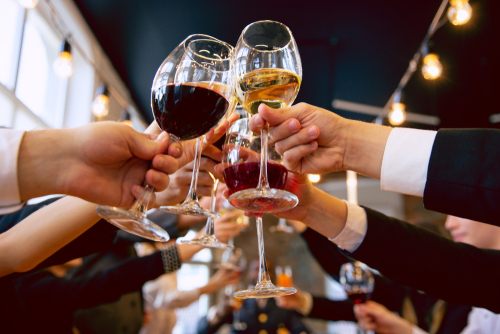The Dutch were a major influence in the production of Bordeaux wines back in the 17th and 18th centuries and their legacy still lives on. They helped to establish vineyards, chateaux, negotiants (wine merchants) and trade. More importantly they are known for draining the Medoc and in doing so they instigated the birth of the appellations that Bordeaux is famous for today.
The Medoc was once salt marsh lying near the estuary and Graves was the major producer of Bordeaux wines at this time. The Dutch applied their expertise in land drainage to create dry land in the Medoc and the reclaimed land revealed gravel outcrops, ideal for growing vines.
This allowed large estates to form along the Gironde Estuary and the wine producing regions of Pauillac, Saint Estephe, Margaux and Saint Julien took shape. You could argue that without the Dutch influence the First Growths Chateaux Lafite, Latour, Mouton and Margaux would have not come into being. (Lafite was actually owned by Dutch merchants from 1797 to 1818).
What I find most interesting is that the Dutch were also responsible for changes in the style and type of wine that Bordeaux produced . . .
During the 17th century the Dutch fleet was the most powerful navy in the world and they dominated trade between the European and Baltic countries, shipping wines from Bordeaux all over the world.
In the past the red wines produced by Bordeaux had been made to drink quickly (not a problem when they were shipped across the Channel to Britain but a different story when they were tossed around on long sea voyages). To help preserve the wines the Dutch merchants developed techniques to better age the wines.
Their introduction of Allumettes Hollandaise or ‘Dutch Matches’ was ground breaking. It involved burning a match or candle dipped in sulphur in empty barrels due to be filled with fresh wine and it stopped the wine spoiling. Sulphur acts as an antibacterial agent. So, it can be said that the Dutch helped to improve the quality and ageing potential of Bordeaux red wines.
Grapes were macerated for longer and the style of Bordeaux red wines developed from the deep rose ‘Clairet’ to the dark red that we recognise today. (If you look at old paintings you can see the colour of red wine is much lighter in the 1600s).
The Dutch also established the vineyards of Sauternes and Barsac and created a market for Bordeaux white wine. The Dutch trade along the River Rhine had lead to a taste for sweet white wines made from late harvested grapes and they saw an opportunity to produce these wines in Bordeaux.
White wine making techniques from Germany were introduced and vineyards rapidly switched from growing red grapes to white.
White grape varieties were also introduced by the Dutch (Melon de Bourgogne was planted in the Loire). They identified the Sauternes and Barsac areas in Bordeaux as those best suited to white wine production and techniques
were improved in order to make the wines sweeter using sulphur (which stops fermentation and thus maintains residual sugar) and late harvesting (in November). Chateau de Malle says that the oldest evidence of sweet white wine produced at de Malle is from the vintage year 1666.
We are not sure if these sweet (Liquoreux) and semi sweet (Moelleux) wines were made using Noble Rot at this time but there are records from the 17th century that state that Noble Rot was affecting the Semillon grapes by October. Some people believe that Noble Rot was a well kept secret, hence the lack of early records as to its use.
Either way a hundred years later the practice of using Noble Rot was well known and the reputation of Sauternes and Barsac eclipsed their rival German and Hungarian dessert wines. Such was their fame they were among the most expensive wines of Bordeaux and were sought after by royalty (and presidents – both Jefferson and Washington enjoyed First Growth Chateau d’Yquem) across the globe.
The Dutch still have a presence in Bordeaux, you’ll find that quite a few Petit Chateaux and negotiants are under Franco-Dutch ownership. The Negotiant House of Beyerman was founded in 1620 by Dutchman Jean-Simon Beyerman (and remained in the same family until 1973).
In the 19th century several well known chateaux came under Dutch ownership: in 1825 Jean Henri Beyerman (Jean-Simon’s grandson) bought First Growth Chateau Haut Brion in partnership with Louis Nicolas Comynet and his descendant bought Chateau Cantermerle in 1892.
Chateau Marquis d’Alesme Becker was acquired in 1809 by Dutch merchant Bekker Terlink. Moving up to the more recent past Dutchman Eric Albada Jelgersma acquired Chateau du Tertre (5th Growth Margaux) and Giscours (3rd Growth Margaux) and Chateau Palmer (3rd Growth Margaux) was acquired by Franco-Dutch negotiants Mahler-Besse!
I hope you found this blog as interesting as I did researching it. Makes me wonder if Bordeaux Wines had something to do with the expression ‘Dutch Courage’.

